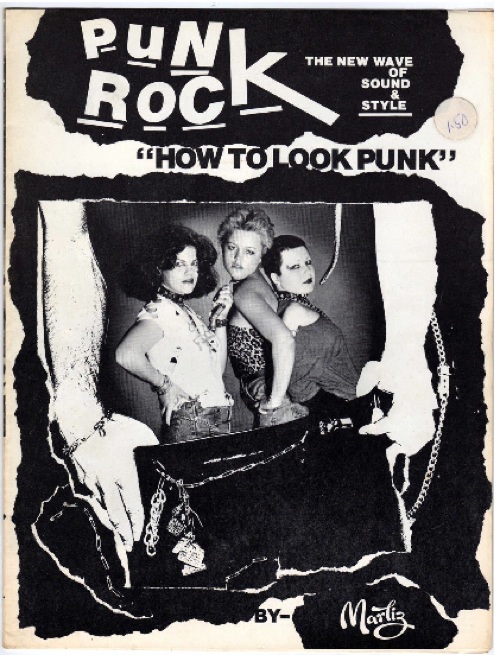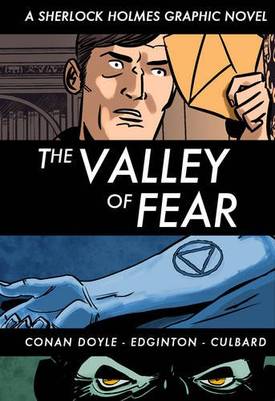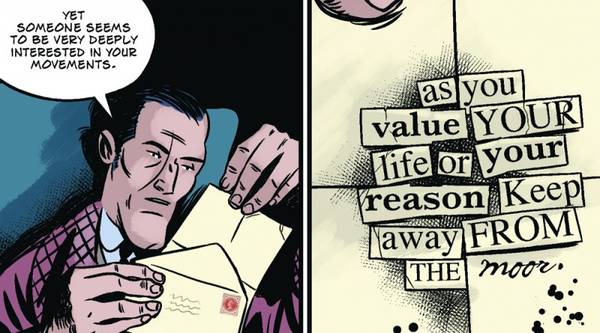The Latest from Boing Boing |  |
- Service emails you your year-old photos
- Twitterer: I egged and shoed the father of the Great Firewall of China
- RIP Jeffrey Jones
- Venezuela suspends driving license
- Wikileaks releases "The Pakistan Papers" through Pakistani newspaper The Dawn
- Which came first: the media orgy or the prurient interest? (Donald Trump edition)
- Magnet Boy of Croatia: gadgets stick to his chest (big photo gallery)
- Do astronauts have internet in space?
- The Infernal Device: giant, ambitious steampunk Kickstarter project
- Hello Kitty Portal Personality Sphere
- How To Look Punk: a marketing/trendspotter's "zine" from 1977
- Hunting the Yeti with "Popular Science"
- Natural selection is neat
- Unabomber auction
- Red-crested tree rat is adorable, not extinct
- There is no miracle cure for cancer
- MAFIAA wants warrantless searches of CD and DVD factories
- And now, a moment of silence for the Prophet Hen of Leeds
- Interview with Mark Kelly and Shuttle Endeavour astronauts, live from space
- America's first monorail: Even older than I thought
- Sherlock Holmes as a series of exciting graphic novels
- CDC explains how to prepare for a zombie apocalypse
- Legal rebuttal: "vade et caca in pilleum et ipse traheatur super aures tuo"
| Service emails you your year-old photos Posted: 20 May 2011 03:45 AM PDT Photo Time Capsule is a service that trawls through the photos you posted to Flickr last year and, twice a month, sends you an email with some year-old images. A nice way to communicate with yourself across time. (via O'Reilly Radar) |
| Twitterer: I egged and shoed the father of the Great Firewall of China Posted: 20 May 2011 03:40 AM PDT A pseudonymous Twitter user who posts as @hanunyi claims to have attended a talk by Fang Binxing (characterized as the "father of China's Great Firewall" and Beijing University of Posts and Telecommunications) at Wuhan University in Hubei province and to have pelted Fang with eggs and shoes. Fang's office denies the attack took place, but the Luojiashan public security bureau alerted the Associated Press that police came to the university to "investigate a shoe-throwing incident." China's 'great firewall' creator pelted with shoes (Image: Humpty was pushed, a Creative Commons Attribution (2.0) image from aussiegall's photostream) |
| Posted: 19 May 2011 09:37 PM PDT  I was sad to learn that one of my favorite illustrators, Jeffrey Catherine Jones, died today. I first came across her work in the 1970s when she was doing a regular one page comic strip for National Lampoon called Idyl. It was light hearted and whimsical and nothing like the rest of the magazine. Jeffrey Catherine Jones, the fantasy artist who helped introduce fine art and illustration influences to comics in the '70s and beyond, has died of complications from emphysema and bronchitis, according to numerous reports. She was 67.RIP Jeffrey Jones |
| Venezuela suspends driving license Posted: 19 May 2011 09:19 PM PDT Venezuelan drivers are so excellent that local authorities have never once found it necessary to suspend anyone's driving license. Until now. |
| Wikileaks releases "The Pakistan Papers" through Pakistani newspaper The Dawn Posted: 19 May 2011 09:33 PM PDT  The Pakistan Papers: "The Dawn Media Group and Julian Assange, Chief Executive of Sunshine Press Productions, the publishing arm of WikiLeaks, have signed a Memorandum of Understanding for the exclusive first use in Pakistan of all the secret US diplomatic cables related to political and other developments in the country. The MoU signed in the UK allows the publication and use of these secret cables in Dawn, its website Dawn.com and DawnNews television." |
| Which came first: the media orgy or the prurient interest? (Donald Trump edition) Posted: 19 May 2011 09:13 AM PDT (via Sociological Images) |
| Magnet Boy of Croatia: gadgets stick to his chest (big photo gallery) Posted: 19 May 2011 02:48 PM PDT  Young Ivan Stoiljkovic poses for pictures with a Samsung Galaxy Tab stuck to his chest in front of his home near Koprivnica, about 62 miles (100km) north of Croatia's capital city, Zagreb, on May 12, 2011. Ivan, 6, is purported to posess an extraordinary and seemingly magical talent: the ability to attract metallic objects -- from spoons to heavy frying pans -- to his body. He is said to be able to carry up to 25 kg of metal stuck to his torso. Ivan's family also claims that his hands can emit heat and his mysterious ability has also given him healing powers. "Medical checkups so far have reaped inconclusive results," reports Reuters. More images follow, in which Ivan "attracts" cutlery, cookware, an iron, and other metallic objects. In the image below, his grandfather tosses coins at his chest. Surely this isn't a hoax! (all photos: Reuters)
|
| Do astronauts have internet in space? Posted: 19 May 2011 02:16 PM PDT Just noticed this interesting detail from the PBS NewsHour/YouTube/Google webcast earlier today, in which Miles O'Brien interviewed astronauts from the space shuttle and International Space Station about life in space -- while they were floating around in space. At one point, Miles asked astronaut Greg Johnson (pilot for the shuttle STS-134 mission) and Ron Garan (a current member of the International Space Station crew) a question posed by a YouTube viewer: "What kind of Internet connection do you get up there? Is it fast? Any restrictions, wink wink. What's the IP range of visits from outer space?" GREG JOHNSON: Good question, DJ. As shuttle guys, we really don't partake in the Internet. We've got synchronizations with our emails. It kind of gives us a pseudo-email or pseudo-Internet to communicate with our families and friends and our associates. However, I'm going to pass this to Ronnie because on the station, I believe that they have a better Internet than we do on the shuttle. Full transcript here. By the way, some of the astronauts mentioned during the webcast that they are tweeting from space, and you can follow them as they post photos and observations. Clearly, Twitter is not making them stupid. |
| The Infernal Device: giant, ambitious steampunk Kickstarter project Posted: 19 May 2011 11:10 AM PDT Myke sez,
Three Enginartists from the "Steampunk Form and Function" exhibit at the Charles River Museum of Industry and Innovation, are seeking to raise funds for their biggest collaborative project to date: "The Infernal Device" "The Device" is a huge 20-foot-tall kinetic sculpture with a 25-foot long spinning painting in the center, which include a zoetropic animation (a spinning animation seen through slats, like the one seen in "The House on Haunted Hill). It will also have moving automata/sculptures on all four corners, and a lot of mechanical activity in between.(Thanks, Myke!) |
| Hello Kitty Portal Personality Sphere Posted: 19 May 2011 11:08 AM PDT  Chris Myles made this beautiful Hello Kitty/Portal Personality Sphere sculptural mashup. It's a gift for a baby shower. |
| How To Look Punk: a marketing/trendspotter's "zine" from 1977 Posted: 19 May 2011 10:48 AM PDT   From 1977, this "'zine" about "How To Look Punk" written by Marliz, who according to the "note on author" is "internationally known in the industry for her marketing ability in current-trend perception and 'how to' help it explode on the scene.'" This is quite an artifact. From 1977, this "'zine" about "How To Look Punk" written by Marliz, who according to the "note on author" is "internationally known in the industry for her marketing ability in current-trend perception and 'how to' help it explode on the scene.'" This is quite an artifact. Punk Rock, The New Wave of Sound & Style: "How To Look Punk" (PDF, via threadbared, thanks Koshi!) |
| Hunting the Yeti with "Popular Science" Posted: 19 May 2011 10:02 AM PDT  The Popular Science archives—Google-digitzed versions of whole issues stretching back to the beginning of the 20th century—will never not be awesome. Reading these magazines can teach you a lot about the culture and history of science. It's also a nice way for journalists, like me, to remind ourselves about how very easy it is to get our jobs wrong. For instance, just because the Royal Geographic Society is sending an expedition to the Himalayas to hunt for the Abominable Snowman doesn't mean the Abominable Snowman definitely exists. In this story, from a gallery of Pop Sci articles about pseudoscience (some appropriately skeptical, some ... not), it's easy to see the writer getting so caught up in the excitement of the hunt that he stopped questioning whether there was really anything to hunt for. It's a fun read. And a nice kick in the pants. |
| Posted: 19 May 2011 09:42 AM PDT |
| Posted: 19 May 2011 09:34 AM PDT   For the right price, you could be the proud owner of Unabomber Ted Kaczynski's iconic sunglasses and hoodie. The US Marshals are auctioning off Kaczynski's personal effects with the profits to go to Kaczynski's victims. The auction -- which includes his university diplomas, tools, books, and even the original handwritten and typed "Unabom Manifesto" -- runs until June 2. From a US government press release: "The U.S. Marshals Service has been given a unique opportunity to help the victims of Theodore Kaczynski's horrific crimes," said U.S. Marshal Albert Nájera of the Eastern District of California. "We will use the technology that Kaczynski railed against in his various manifestos to sell artifacts of his life. The proceeds will go to his victims and, in a very small way, offset some of the hardships they have suffered."Theodore John Kaczynski aka The Unabomber auction (GSA Auctions) (via The Atlantic) Unabomber Auction 5/18-6/2 2011 (Flickr) |
| Red-crested tree rat is adorable, not extinct Posted: 19 May 2011 09:31 AM PDT  The last red-crested tree rat was spotted in 1898. After 113 years, and several searches, the species was assumed to be extinct. That is, until this one showed up on a public handrail at 9:30 pm on May 4, in Colombia's El Dorado Nature Reserve. Cute! And not dead! Via Joan |
| There is no miracle cure for cancer Posted: 19 May 2011 09:08 AM PDT  Or: Maybe Facebook isn't the best source for science and health news. An interesting debunking. You know the game, Telephone? You line up a bunch of people and the person on one end whispers something to their neighbor, who repeats it to the next person in line, and so on. At the other end, the last player says the secret out loud, and then everybody gets a nice chuckle from how distorted the secret has become as it was passed along the line. I rather like Telephone the game. But, lord, how I hate when it happens in real life. So, this week on the Internet, there's a story circulating that claims scientists have discovered a foolproof, side-effect free cure for cancer ... but They (you know, "THEY") are preventing you from getting access to it. This story is like the end of a game of Telephone. There's some real (and interesting!) science going on, but by the time the story made it to Facebook the reality of a promising chemical compound that could be a good treatment for some types of cancer (maybe, scientists aren't sure yet) had become a first-rate conspiracy theory. The compound in question is dichloroacetate (or DCA), and it's not really anything new. In fact, research into this compound has been going on long enough—and with enough attention from within the field of people who closely follow basic, laboratory chemical research—that I could almost do this entire debunking using only excerpts from four-year-old posts made by Orac, a surgeon and scientist who blogs about this kind of stuff in a much more specialized way than I do. Here is something fundamental that you need to remember: Every moment of every day, there is tons of research happening that is centered around chemical compounds that might be useful in some medical application. New compounds are discovered. Existing compounds are tested in new ways. Sometimes, one of these compounds looks particularly interesting to a researcher. They'll publish on it, and their school or institution will put out a press release. Basic chemistry isn't much of a news hook, so these press releases tend to speculate about what the compound could be used for, how it might benefit us someday. There are so many of these sort of press releases floating around at any given time that journalists who focus on medical science talk about them as a separate category. But, just because a compound is interesting in a chemistry sense, or just because it has shown promise in some in vitro laboratory tests, doesn't mean that it will ever be useful in a practical application. It is very common for a compound to kill cancer in a test tube, but not actually do anything in a human body. Sometimes, a compound successfully fights cancer, but isn't actually safe for humans. And, most importantly, "cancer" isn't really one disease. Different cancers have different causes and require different kinds of treatment—even the same cancer at different stages might not be able to be treated the same. A compound could be effective against stage 2 leukemia, but not do a damn thing to treat stage 4 breast cancer. DCA is just one of those chemical compounds that scientists are excited about. It's made it past some of the most basic, early studies, but we don't yet know how effective it truly is, and what it's effective against. From what I have read about it, the vast majority of research has been in vitro and in animals. Here's Orac on what we know about why, in those settings, it has been an effective treatment against some cancers:
This new round of excitement on the Internet has bubbled up because those same researchers recently published the results of a first, very small clinical trial of DCA. For the first part of the study, the researchers tested DCA on 49 tumors that had been taken out of human patients. They got some good results, and then tested DCA on five actual human cancer patients. But here's the thing—those humans were treated with more than just DCA. In fact, they were also getting chemotherapy and radiation treatments, stuff we already know is effective in some situations against some cancers. So, why do that? If you're tying to figure out whether DCA is effective, why administer it alongside things we already know are effective? Doesn't that muddle your results? It would, yes. If efficacy was the thing that was being tested here. Orac again:
Five different patients, in different stages of cancer, and using different treatment regimens took DCA in addition to their ongoing traditional cancer treatments. One died. When you look at all the patients' tumors, there's evidence that the DCA did what the researchers expected it to do—which is good, and is part of the process of studying a chemical like this—but it isn't the same as evidence that DCA cured anybody. Basically, as I said before, DCA is an interesting and promising chemical that could, someday end up being a treatment for some cancers. But that has by no means been proven yet. Scientists are studying this chemical the same way they study all promising chemicals. It's a slow process, one that involves many little steps of research—any of which could easily be overblown into something that it is not. This is probably not the last time you will hear about DCA. And there is a good chance that the next time you hear about it, it still won't be because the chemical has been proven to work. You'll just be hearing about another link in the chain of evidence. The snail's pace of cancer research is frustrating. Especially to people who actually have cancer right now. It's easy to wonder, "Why don't we just give DCA to cancer patients who want to try it, and see what happens?" That's a tough a question. And it doesn't have any easy answer. I'm going to pass this back to Orac just one more time:
Here's a couple of links I'd recommend for further reading: Image: Cancer?, a Creative Commons Attribution Share-Alike (2.0) image from runran's photostream |
| MAFIAA wants warrantless searches of CD and DVD factories Posted: 18 May 2011 09:45 PM PDT The MPAA and RIAA are pushing California legislation that would allow police to search optical disc duplication plants without a warrant; the bill's passed two state senate committees. "The crime of illegal mass reproduction of music and movies is a serious problem. Last year alone, more than 820,000 illegal discs were seized by law enforcement authorities in California," state Sen. Alex Padilla, a Los Angeles-area Democrat and author of the legislation, said in a statement. "Fraudulent CDs and DVDs undermine our economy and California's role as a global leader in music and film. They steal revenue from artists, retailers, and our entertainment sector."RIAA Legislation: No Warrant Required to Search, Seize Optical-Disc Plants |
| And now, a moment of silence for the Prophet Hen of Leeds Posted: 19 May 2011 07:32 AM PDT The Christian Science Monitor would like to take this moment to remind everyone of five previous (and utterly incorrect) attempts to predict the end of the world. My favorite: The 1806 prediction by the Prophet Hen of Leeds, who was a chicken. It's a tale that is one part Zuckerman's Famous Pig, one part Jesus on toast, and one part Humane Society nightmare. |
| Interview with Mark Kelly and Shuttle Endeavour astronauts, live from space Posted: 19 May 2011 07:29 AM PDT [Video Link] Miles O'Brien interviewed the Endeavour crew in a "live from space" webcast this morning, for PBS NewsHour. The interview took place as the shuttle and space station complex flew about 250 miles above earth, traveling at 17,500 miles per hour. Bad ass! Transcript here. |
| America's first monorail: Even older than I thought Posted: 19 May 2011 07:24 AM PDT  The other day, I ran across some photos of Fawkes' Aerial Swallow, a circa-1910 monorail built on a ranch in what is now Burbank, California. The site where I found the photos, and a couple of others, referred to the Aerial Swallow as America's first monorail. But, in the comments on that post, several people noted earlier examples that put the Swallow to shame. The photo above, for instance, is a stereoscope image of General LeRoy Stone's Centennial Monorail, which ferried attendees of the 1876 Centennial Exposition between the Agricultural Hall and the Horticultural Hall. (Thanks to Square for linking me to that one!) Ten years later, another monorail was operating, this time in the Boston area. And unlike the Centennial Monorail or the Swallow, this one really looked like the Fantasy Steampunk Monorail of Dreams. Look at the wheel configuration! How badass is that? Invented by Joe V. Meigs, the Boston monorail was designed for a top speed of 20 miles per hour, and to be able round tight corners without disturbing the passengers inside. The train cars themselves were sleek and rounded. The Scientific American article describing Meigs' monorail goes into a lot of explanation about why the rounded shape was clearly mechanically and practically superior, but you kind of get the impression that, even then, everybody just knew that shape made it look more futuristic and awesome. According to a 1992 article in The Boston Globe, the Meigs monorail failed not because of technical problems, but because of some literally heated competition—Meigs' test line was the victim of arson and vandalism before it was finally shut down in 1894. (Thanks to Rus Gant!) If you want more info on early monorails in America, I'd recommend checking out this New York Times Magazine story from May 29, 1910. Suggested by Ironic Sans, the article uses several (mostly European) monorails as examples of the different types of monorail one can build. In conclusion: MONORAIL! |
| Sherlock Holmes as a series of exciting graphic novels Posted: 05 May 2011 06:30 AM PDT  Today marks the publication of The Valley of Fear the fourth and final volume in Self Made Hero's graphic novel adaptations of Arthur Conan Doyle's four full-length Sherlock Holmes novels. Adapted by Ian Edginton and drawn by INJ Culbard, these four volumes are among the most exciting treatments of the Holmes novels that I've ever seen -- Culbard's pulpy, golden-age illustration style complements Edginton's sharp eye for pacing to great effect. The books hew very closely to the original Doyle novels, abdriging the less-interesting expository sections and stage-direction through the use of cleverly juxtaposed panels, which, though often wordless, keep the action moving at great potboiler pace (click through below to see some examples of the great art in these books). Today marks the publication of The Valley of Fear the fourth and final volume in Self Made Hero's graphic novel adaptations of Arthur Conan Doyle's four full-length Sherlock Holmes novels. Adapted by Ian Edginton and drawn by INJ Culbard, these four volumes are among the most exciting treatments of the Holmes novels that I've ever seen -- Culbard's pulpy, golden-age illustration style complements Edginton's sharp eye for pacing to great effect. The books hew very closely to the original Doyle novels, abdriging the less-interesting expository sections and stage-direction through the use of cleverly juxtaposed panels, which, though often wordless, keep the action moving at great potboiler pace (click through below to see some examples of the great art in these books). Each volume is introduced by a short essay from a Holmes scholar or contemporary mystery novelist, providing excellent context for the story, its original production, and the way it was initially received. I've loved Sherlock Holmes all my life, and I've read the original novels a dozen times or more, but these adaptations still brought new life and energy to the familiar texts. But they're not just a great complement for a Holmes-lover's collection -- they'd make an excellent introduction to the original stories, for adults and sharp adolescents alike. Sherlock Holmes Graphic Novels 
|
| CDC explains how to prepare for a zombie apocalypse Posted: 18 May 2011 09:42 PM PDT  The US Centers for Disease Control have published their plan for keeping America safe during a zombie uprising. It's an exercise in general disaster preparedness, and a clever way of getting people engaged in keeping themselves and their communities safe in the event of unexpected bad stuff. If zombies did start roaming the streets, CDC would conduct an investigation much like any other disease outbreak. CDC would provide technical assistance to cities, states, or international partners dealing with a zombie infestation. This assistance might include consultation, lab testing and analysis, patient management and care, tracking of contacts, and infection control (including isolation and quarantine). It's likely that an investigation of this scenario would seek to accomplish several goals: determine the cause of the illness, the source of the infection/virus/toxin, learn how it is transmitted and how readily it is spread, how to break the cycle of transmission and thus prevent further cases, and how patients can best be treated. Not only would scientists be working to identify the cause and cure of the zombie outbreak, but CDC and other federal agencies would send medical teams and first responders to help those in affected areas (I will be volunteering the young nameless disease detectives for the field work).Preparedness 101: Zombie Apocalypse (Image: Zombie Walk 2010 - Curitiba, a Creative Commons Attribution (2.0) image from nivaldoarruda's photostream) |
| Legal rebuttal: "vade et caca in pilleum et ipse traheatur super aures tuo" Posted: 19 May 2011 05:07 AM PDT Eric Tukewitz, a New York lawblogger, was one of many, many people who wrote about a badly managed legal defense from an inexperienced lawyer representing an accused murderer. The defense was handled very badly, and resulted in a mistrial, and then observers remarked in depth on the website of Joseph Rakofsky, the inexperienced lawyer in question, and on the erroneous impression of vast experience that the website created. Rakofsky has responded by suing everyone involved, from the Washington Post, who covered the story (in which they quote the judge in the case, remarking unfavorably on Rakofsky's legal prowess), to the American Bar Association, to the large number of lawbloggers who wrote about him. Tukewitz is just one of the lawbloggers in question, but he's come up with a legal rebuttal to Rakofsky's suit, which he considers baseless: "vade et caca in pilleum et ipse traheatur super aures tuo," which, loosely translated, means "Go shit in a hat and pull it down over your ears" (lit., "go shit in a [knit] hat & let that same hat itself be pulled over your ears."). Now that's the law at its finest! Joseph Rakofsky -- I Have An Answer For You (via Lowering the Bar) |
| You are subscribed to email updates from Boing Boing To stop receiving these emails, you may unsubscribe now. | Email delivery powered by Google |
| Google Inc., 20 West Kinzie, Chicago IL USA 60610 | |

 "The egg missed the target. The first shoe hit the target. The second shoe was blocked by a man and a woman.
"The egg missed the target. The first shoe hit the target. The second shoe was blocked by a man and a woman. 








 What was Rakofsky thinking? That a bunch of lawyers that make their living in the well of the courtroom, accustomed to walking a high-wire without a net as we cross-examine hostile witnesses, would somehow cower in fear at an utterly frivolous lawsuit? Did he think that those of us that write blogs, for all to see, might not somehow have a basic grasp of the First Amendment? Didn't he know, well before he even went to law school, that people have a right to set forth their opinions? How could he survive law school and pass a bar exam without knowing constitutional fundamentals? Perhaps the better question, why wasn't he thinking of what would happen in response to such a suit? Was he a spoiled child that got everything he wanted simply by throwing a tantrum?
What was Rakofsky thinking? That a bunch of lawyers that make their living in the well of the courtroom, accustomed to walking a high-wire without a net as we cross-examine hostile witnesses, would somehow cower in fear at an utterly frivolous lawsuit? Did he think that those of us that write blogs, for all to see, might not somehow have a basic grasp of the First Amendment? Didn't he know, well before he even went to law school, that people have a right to set forth their opinions? How could he survive law school and pass a bar exam without knowing constitutional fundamentals? Perhaps the better question, why wasn't he thinking of what would happen in response to such a suit? Was he a spoiled child that got everything he wanted simply by throwing a tantrum?
No comments:
Post a Comment